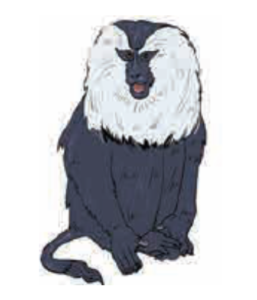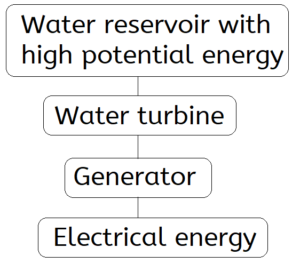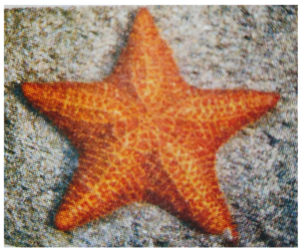Answer in one sentence.
1. What is gamete formation?
Ans. Gamete formation is a process in which haploid gametes are formed by meiotic division.
2. Write the types of twins.
Ans. Dizygotic and monozygotic twins.
3. Write any two- Sexually transmitted diseases.
Ans. Syphilis, AIDS.
4. What determines whether the two organisms of a species will be exactly similar or not?
Ans. The similarity or difference between the organisms of a species depends upon whether these individuals are formed by sexual reproduction or asexual reproduction.
5. How are the sperms formed?
Ans. Testes contain numerous seminiferous tubules. Germ cells present in the tubules divide by meiosis to produce sperms.
6. How is the semen produced?
Ans. Semen is formed of sperms and secretions of seminal glands, prostate gland and Cowper’s glands.
7. Which are the components of pollination?
Ans. Pollination occurs with the help of abiotic agents like wind, water and biotic agents like insects and other animals.
8. Which parts are converted into seed and fruit respectively after fertilization?
Ans. After fertilization, the ovule develops into seed and ovary into fruit.
9. What does germination mean?
Ans. Zygote utilizes food stored in endosperm of seed and a new plantlet is formed. This is called as seed germination.
10. Write the name of the type of reproduction in the following figure.
Ans. Budding
11. How can plants and animals save themselves from extinction?
Ans. Genetic variation helps the organisms to adjust with the changing environment and thereby to maintain their existence. Due to this, plants and animals can save themselves from being extinct.
12. Name the three types of asexual reproduction in unicellular organisms.
Ans. (1) Binary fission (2) Multiple fission (3) Budding
13. Write the functions of
i) Ovary ii) Sepals iii) Penis iv) Seminal vesicle
Ans.
i) Ovary: In human females, ovaries release eggs and secrete progesterone and estrogen. In plants, ovary present at the base of the carpel contains ovules. Embryo sac is formed in each ovule by meiosis.
ii) Sepals: Sepals are responsible for protection of inner whorls.
iii) Penis: Semen is ejaculated out through penis.
iv) Seminal Vesicles: Secretions of seminal vesicles constitute the semen.
14. What does ecosystem mean?
Ans. The definite geographical area formed by biotic and abiotic factors and their interactions with each other constitute the ecosystem.
15. What is indicated by this symbol?
Ans. Recycle and reuse materials in order to reduce waste.
6. Write any two man made factors affecting the environment.
Ans. Deforestation, industrialization.
17. The animal in figure, belongs to which endangered species?
Ans. The animal lion tailed monkey in the given figure is an example of endangered species.
18. Write the advantages of the Hydroelectric Power project.
Ans. Advantages of hydroelectric power plant:
(1) No fuel is burnt in a hydroelectric power plant.
(2) Thus, no air pollution due to combustion of fuel occurs.
(3) Electricity can be generated whenever required if the dam has sufficient water storage.
19. Write the problems associated with hydroelectric power projects.
Ans. Problems associated with hydroelectric power plant:
(1) Villages, towns, forests may submerge due to back-water caused by storage of water in dams.
(2) This leads to forced migration of the living population in that area.
20. Write the merits of nuclear energy.
Ans. A nuclear power plant does not use fossil fuel like coal. Therefore, problems like air pollution do not arise.
21. Write the demerits of a nuclear energy plant.
Ans.
(1) Improper nuclear-waste storage and disposal can result in environmental contamination.
(2) Accidental leakage of nuclear radiation can lead to lethal disaster.
22. Draw the flowchart showing generation of electrical energy through hydroelectric power plant.
Ans.
23. Which substance is used as fuel in nuclear power plants?
Ans. In a nuclear power plant, uranium or plutonium are used as fuel.
24. Energy from fossil fuels and nuclear plants are not eco-friendly sources, why?
Ans. Burning of fossil fuels like coal, and natural gas leads to emission of certain gases and soot particles. This results in air pollution. Therefore, energy from fossil fuels and nuclear plants are not eco-friendly sources.
25. Solar reflectors are important, why?
Ans. The solar panel consists of many reflectors that reflect and concentrate solar radiations on absorbers.
26. In fuels coal and natural gas, which one is eco-friendly? Why?
Ans. In fuels coal and natural gas, natural gas is more eco-friendly since it does not contain sulphur and burning of natural gas results in less pollution.
27. State the importance of inverters.
Ans. The inverter is an electronic device that converts DC solar power to AC power which is required to run most of the equipment in domestic and industrial use.
28. Why are control rods used in nuclear reactors?
Ans. In the nuclear reactor, nuclear fission of nuclei to atoms like uranium or plutonium occurs. Control rods are used to speed up or slow down the chain reaction.
29. What is green energy? Which energy source can be called a green energy source?
Ans. Energy generated from sources which are unlimited and environment friendly is called green energy. Energy sources which are unlimited and environment friendly like wind, water reservoir, sunlight and bio-fuel are called as green energy sources.
30. Explain: Fossil energy is not an example of green energy.
Ans. Burning of fossil fuels like coal, natural gas leads to emission of harmful gases like carbon monoxide, nitrogen dioxide causing air pollution. The reserves of fossil fuels are limited which are going to get depleted in the future. Thus, as the generation of energy from fossil fuels is not an example of green energy.
31. Which animal has three pairs of legs?
Ans. Butterfly, honeybee, cockroach, etc. have three pairs of legs.
32. In how many parts is the body of Hemichordates divided?
Ans. Body of Hemichordates in divided into three parts as proboscis, collar and trunk.
33. Write any one cold blooded animal you know.
Ans. Lizard, Snake, etc.
34. Spongilla bears numerous pores on their body. What are those pores called?
Ans. Numerous pores on the body of Spongilla are called as ostia and oscula.
35. What are the animals having vertebral columns in their body called as?
Ans. The animals having vertebral columns in their body are called as vertebrates.
36. The body of the animal in which phylum is radially symmetrical and diploblastic?
Ans. The body of animals in phylum Coelenterata/ Cnidaria is radially symmetrical and diploblastic.
37. Write the name of the animal having pseudo coelom.
Ans. All animals of phylum Aschelminthes (roundworms) have pseudocoelom, e.g. Ascaris, filarial worm, etc.
38. Which animal doesn’t have a neck?
Ans. Animals belonging to class Amphibia, e.g. frog, toad, salamander, etc. don’t have a neck.
39. What is the length of a hookworm?
Ans. Hookworms range from 8 to 15 mm in length.
40. How does the animal in the figure protect itself?
Ans. Body of sea anemone has cnidoblast-bearing tentacles which help it to protect itself.
41. What are the locomotory organs of the animal given in the picture?
Ans. Tube feet are the locomotory organs of the animal (Star fish) given in the picture.
42. Which fungus is used to make soy sauce by fermentation?
Ans. The fungus Aspergillus oryzae is used to make soy sauce by fermentation.
43. Why does the process of dirt removal occur in detergents even at low temperature?
Ans. The process of dirt removal occurs even at low temperature due to mixing of enzymes with detergents.
44. What is added to impart thickness to instant soup?
Ans. Xanthan gum is added to impart thickness to instant soup.
45. Which chemical substances get mixed with the soil by adding chemical pesticides and insecticides in agricultural industry?
Ans. Fluoroacetamide-like chemicals are mixed with soil due to use of chemical pesticides and insecticides in agricultural industry.
46. Which microbes convert uranium to its insoluble salts?
Ans. Geobacter convert uranium to its insoluble salts.
47. Write the names of two chronic diseases.
Ans. AIDS, T.B. are the two chronic diseases.
48) Complete the following table.
Ans.
49. Correct the given statement and rewrite it.
An effect of disaster on economic leadership is that if local leadership is not strong enough, citizens get confused.
Ans. An effect of disaster on social leadership is that if local leadership is not strong enough, citizens get confused.